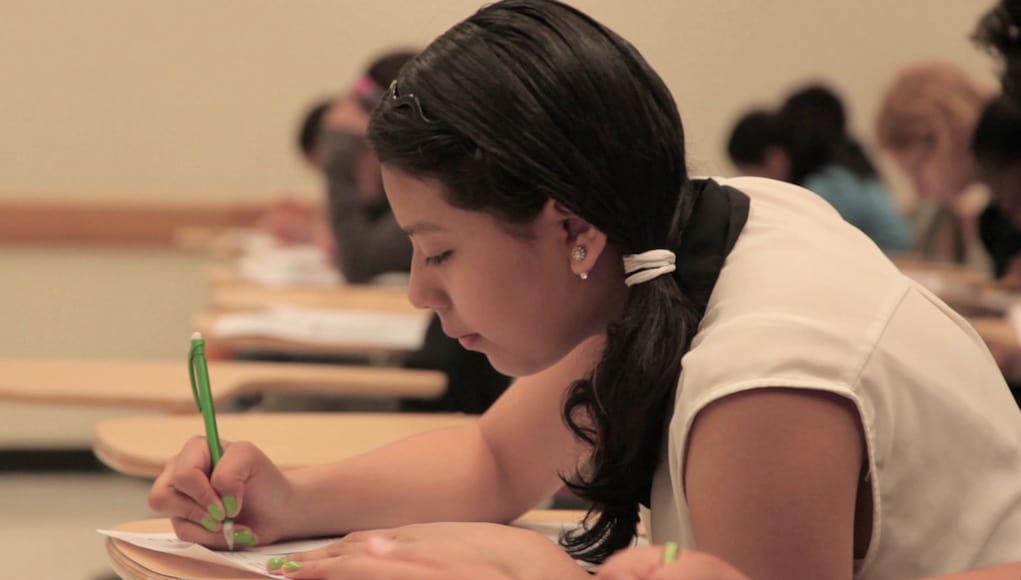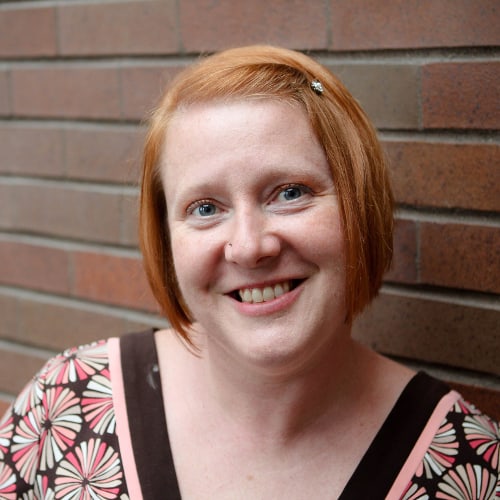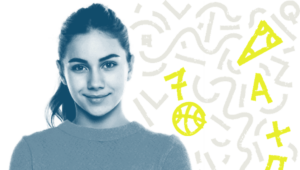Smart Review | Tested: An Education Documentary

“We are all waiting for that one day when our fate will be decided.”
This may sound melodramatic coming from a middle schooler whose voice is just beginning to change, but for the lives of New York City middle school students taking the Specialized High School Admissions Test (SHSAT), this is truth.

The SHSAT is the ONLY test that determines whether or not students will be admitted to one of the “Big Three” specialized high schools: Stuyvesant, Bronx Science and Brooklyn Tech. Competition is immense, with most students who eventually receive admittance doing a minimum of 8 to 10 hours a week of test prep outside of their regular school day for months, and even years before the test.

These schools are all you’d imagine. They turn out Nobel Laureates and breed students for the Ivy Leagues. No one is questioning the superiority of these schools; in fact, that is exactly at the center of Curtis Chin and Adam Wolman’s documentary, Tested. It is an hour and
It is an hour and thirteen minute day-in-the-life look at a variety of students from all across New York City–all vying for the opportunity to attend a prestigious specialized high school. In the end, 82% of those who apply are turned down.

The system is complicated and complex, and the documentary does an excellent job telling the story without being heavy-handed. The story is one of numbers. In NYC, the racial breakdown of public high schools looks like this:
| Race | All NYC High Schools | Big 3 |
| Asian | 15% | 64% |
| White | 15% | 22% |
| Black | 28% | 4% |
| Hispanic | 40% | 5% |
However, the numbers are further complicated by a few more facts. Nearly 60% are boys, and the huge disparity between Asians and all others defies an easy explanation. The “feeder schools” where the Asian students are mostly coming from are three low-income schools without the same advantages of the other feeder schools in more prominent neighborhoods. It is important to note that Asian Americans have the highest poverty rate of any group in all of New York City.

This begs the question then, how does this subgroup manage to produce twice as many students with acceptances than the other groups combined? The documentary doesn’t shy away from this question and, to its credit, attempts to shed light on the issue without blinding the viewer with too much commentary by having the students profiled openly discuss it. For example, one Asian student’s family lives near the poverty line, and yet spends $5,000 to make sure their children go to Saturday tutoring. This sacrifice for education is sort of a subplot to the documentary as it runs throughout all the stories.
For example, one Asian student’s family lives near the poverty line, and yet spends $5,000 to make sure their children go to Saturday tutoring. This sacrifice for education is sort of a subplot to the documentary as it runs throughout all the stories.

Diane Ravitch, education historian, education policy analyst and author, points out that “we should offer a high-quality education to all students,” and decries the use of a singular measure of intelligence–specifically the test. NYC Councilwoman Education Committee Member Inez Barron mentions that multiple measures could include portfolios and experience that would provide a “composite picture” that would more accurately reveal what a student knows and is able to do.
Others argue that as soon as you add subjective criteria to the admissions process, it will hurt everyone, watering down the caliber of students as opinion will be a deciding factor. This side points out the availability of free tutoring services, and adds that if students and their families want the opportunity, they’ll just need to “compete like everyone else.”

In 2012, the NAACP Legal Defense Fund raised allegations that some communities “game” the system by hiring extra tutors, and asked that multiple measures be considered. However, in April 2015, a bill to remove the SHSAT as the sole admissions criteria was defeated in the New York Senate Education Committee. Clearly this is not a simple dilemma, but one wrought with questions of race, gender, cultural background, socio-economics, with a little politics thrown in for good measure.

A few years ago, there were visiting teachers from China who observed several of my classes. Afterward, over a meal, they praised me for all I did to make the work accessible to the students, and then the oldest teacher (in her 30s) asked me something that still sticks with me: “What do they do to help themselves?”
The cultural divide between us was immense at that moment, as so much of the expectation on American education is that teachers are the ones responsible for the entirety of a student’s education, not personal responsibility or parental involvement. It is why I’m always irritated when people want to compare test score data of American children with any other country. This documentary even further underlines my point–the way communities treat education has an incredible influence on student outcomes. The truth to her question was simple: I don’t expect my students to do much to help themselves.
I mention that personal anecdote because, when I stepped away from the documentary, my biggest takeaway was the deep concern that all of the parents had for their children’s education. I am inspired and encouraged by how hard so many students were willing to work for the chance to shape their futures. The stories are authentic, and heartbreaking when you consider that 82% will be turned away from a “good school.” The documentary begins with a parent explaining that “we just have ‘bad schools’ and ‘good schools’,” and that is the real problem, not the test.
I highly recommend this documentary for all teachers, everywhere, not just New York City. Sure, it is a story of difference and missed opportunities, but that is not all. Rather, I’d offer it as a hopeful indication that parents and students are willing to do more than perhaps we’ve come to believe.
As you watch, surely you’ll notice the disparities, the heartbreak and the successes too; however, I challenge you to look at the potential and the possibility to engage students and families in receiving a high-quality education. Let’s work together from where we are to best serve all of our students.
For more, see:
- 7 Ways to Maximize Student Engagement
- Does the Classroom Prepare Students for the Real World or Just More Testing?
- 5 Keys to Forging Strong Parent Engagement
Stay in-the-know with all things EdTech and innovations in learning by signing up to receive the weekly Smart Update.








John Norton
From a progressive point of view, the American public school system is geared (or attempts to be geared) so that students' success is not always largely dependent on the actions of parents. We don't need to apologize for this, beyond any failures to reach out to parents and engage them more effectively.
Support for quality teaching is another issue with lots of socio-economic angles, including who needs it most and where it's supported least. The new Administration's proposed education budget would gut support for teaching training, perhaps rationalizing that the training is often "not very good." Is the cure for that "zero funding"?
It's fairly easy to create some elite schools with superior teachers, and not necessarily a negative thing. But these are drops in a very big bucket. America's public school problems are problems only highly effective public school educators can solve. The educators who know what to do are out there, in droves. They need to be recognized and supported to be change leaders. The author of this article is certainly one of them!